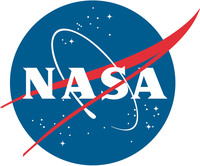In May, Facebook’s Aquila program reached an important milestone. The solar-powered drone, which was developed last year, finally completed a second full-scale test flight without crashing. The testing happened just after sunrise at around 5:15 am in a remote part of Arizona.
The Aquila program is guided by the vision to make internet connectivity available to over four billion people across the globe who still don’t have access. To date, Facebook is facing competition over aerial internet from Google’s Project Loon, OneWeb’s satellite constellation, as well as projects by SpaceX, and Boeing.
Last year, Aquila’s first test flight ended in a crash due to a gust of wind affecting its landing configuration. This led the team to fine-tune the drone’s design. Facebook’s director of aeronautical platforms Martin Luis Gomez shared in his blog, “The improvements we implemented based on Aquila’s performance during its first test flight made a significant difference in this flight.”
Facebook’s engineering team has enumerated a number of modifications. To support a successful landing, they added spoilers to the aircraft’s wings, along with a horizontal propeller. They also incorporated hundreds of sensors to gather new data as well as new radios for the communication subsystem.
The upgrades they applied were all worth it, as it resulted in Aquila’s triumph. “The climb rate was nearly twice as fast as on our first flight. The aircraft smoothly slid to a stop. The entire team was thrilled with these results,” Gomez added.
Their job doesn’t end there, however. They have to solve some difficult engineering challenges to make the aircraft stay aloft in the same area for months at a time. This is in accordance with the Aquila program’s main goal, which is to have a fleet of drones soar together at 60,000 feet, communicating with each other with lasers.
We can only hope that these concepts for aerial access get off the ground soon. And maybe, in the not-so-distant future, it might just help bring the world closer through internet connectivity.




